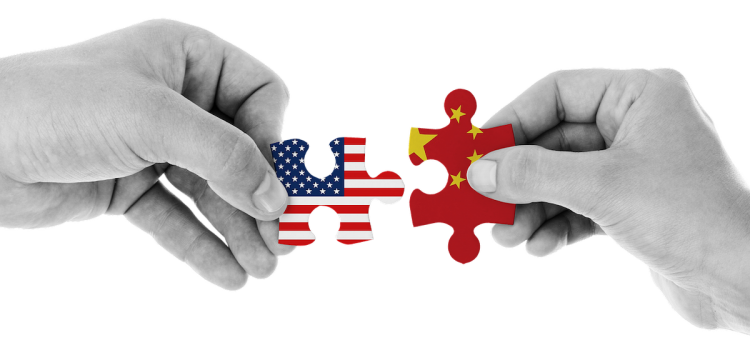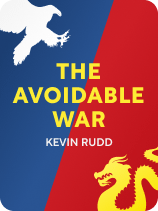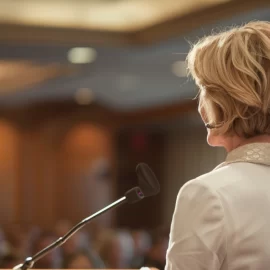

This article is an excerpt from the Shortform book guide to "The Avoidable War" by Kevin Rudd. Shortform has the world's best summaries and analyses of books you should be reading.
Like this article? Sign up for a free trial here.
Why did the US want China as an ally in the 20th century? After the two nations normalized diplomatic relations, what were the sticking points?
In The Avoidable War, Kevin Rudd explains the complex factors contributing to hostility between the US and China. One chapter in this fascinating history is the normalization of relations between the two countries.
Read on for an overview of China-US diplomatic relations in the latter part of the 20th century.
China & US Establish a Formal Diplomatic Relationship
After years of oscillating alliances and tensions, China-US diplomatic relations formally normalized in 1979. Under the leadership of US President Richard Nixon, the two countries established a working relationship for practical economic and political reasons.
The process of opening relations with China started years earlier—in 1971—when the US still hoped for an ally in East Asia to help end the Vietnam War. China had initially supported the Viet Cong in North Vietnam during the war but later reduced its military aid in the form of weapons and training. The US also wanted to have China as an ally to gain leverage over the Soviet Union in negotiating arms control agreements. Lastly, the US hoped that, as China’s economy grew, it would eventually liberalize—meaning it would engage in free trade, which would benefit the US economically.
(Shortform note: Some of these plans did eventually pan out for the US. Although China never fully stopped supplying military equipment to North Vietnam during the war, the US did get access to the Chinese consumer market, and Chinese communist leader Deng Xiaoping instituted many liberal economic reforms during his rule from 1978 to 1989 that benefited the US. In addition, the US successfully negotiated treaties with the Soviet Union to limit weapon acquisition.)
On the other hand, China hoped that the US would protect it from potential military aggression from the Soviet Union, provide China with military intelligence and equipment, and boost China’s economy through temporary trade relations. China’s relations with the Soviet Union had collapsed throughout the 1950s-1960s (a rift partly caused by differing political ideologies between Soviet leader Nikita Khrushchev and Chinese Chairman Mao Tse-tung), leaving China in a desperate financial situation when the Soviet Union ended its economic aid. This made China even more keen to strengthen economic ties with the US.
(Shortform note: At the time of official diplomatic normalization, both the US and China were motivated to align themselves against threats from the Soviet Union. Today, although China and Russia don’t have a formal alliance, Chinese officials have publicly acknowledged that their diplomatic relations have improved significantly. As tensions between the US and Russia escalate, some political analysts suggest that China and Russia both stand to benefit from aligning themselves against the US.)
Early Flaws in the Pragmatic Relationship
Rudd emphasizes that this mutually beneficial partnership between the US and China led to a key misunderstanding in the two countries’ relationship. The US expected that, because a trade relationship between them was emerging, China was on its way to becoming a liberal, capitalist, democratic state like the US. On the other hand, China—which was now ruled by the CCP—viewed the US as a necessary and temporary measure to build an economically self-sufficient, communist state in the long term.
For China, trade relations with the US weren’t a sign of its fundamental transformation into a democratic, capitalist state. China’s resistance to significant political reform has been evident over the years in events such as Tiananmen Square, in which the Chinese military violently suppressed a protest in 1989 by students demanding democratic reform.
(Shortform note: This misunderstanding between the two countries seems to have played out mostly in China’s economic favor—it continues to diversify its economic ties (leading to less dependence on trade with the US), and the long-term trend has been toward a trade surplus in China’s favor, meaning it exports more products to the US than it imports. Politically, the government has stayed firm in its socialist values as directed by the CCP.)
Another sticking point in their diplomatic relations was the issue of Taiwanese sovereignty. China wanted to regain full control over the island of Taiwan, which had formed a separate government ruled by the Nationalist Party that fled mainland China after the Chinese civil war. The US hindered this goal by establishing diplomatic relations with Taiwan and providing them with military assistance. Although military and economic cooperation continued between the US and China, the Taiwan issue would continue to stymie relations between the US and China for decades.
(Shortform note: Recently, the US has grown more explicit that China can’t use military force to seize control of Taiwan without risking the US’s retaliation. This is in the US’s interest partly because Taiwan provides about 90% of the global supply of semiconductors—microchips that are crucial components in technologies like cell phones and laptops. In addition, allowing China to place military bases in Taiwan would be a security risk to the US, giving China strategic positioning close to Japan, the Philippines, and US military bases in the Pacific.)

———End of Preview———
Like what you just read? Read the rest of the world's best book summary and analysis of Kevin Rudd's "The Avoidable War" at Shortform.
Here's what you'll find in our full The Avoidable War summary:
- The complex factors contributing to hostility between the US and China
- How a military conflict between the US and China can be avoided
- The huge toll a US-China war would take on global stability





